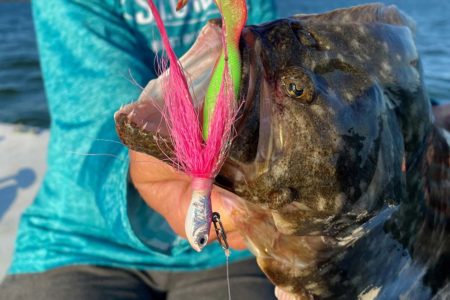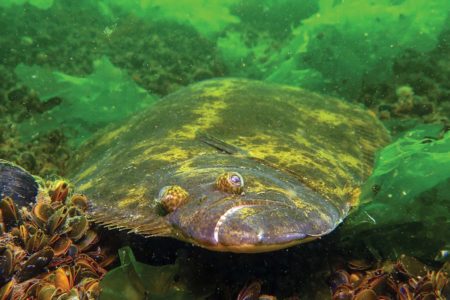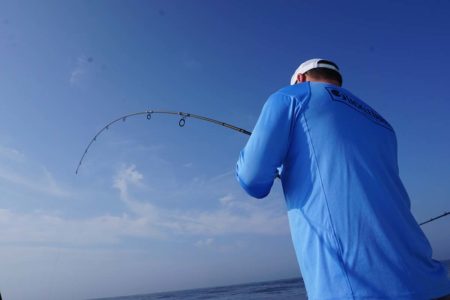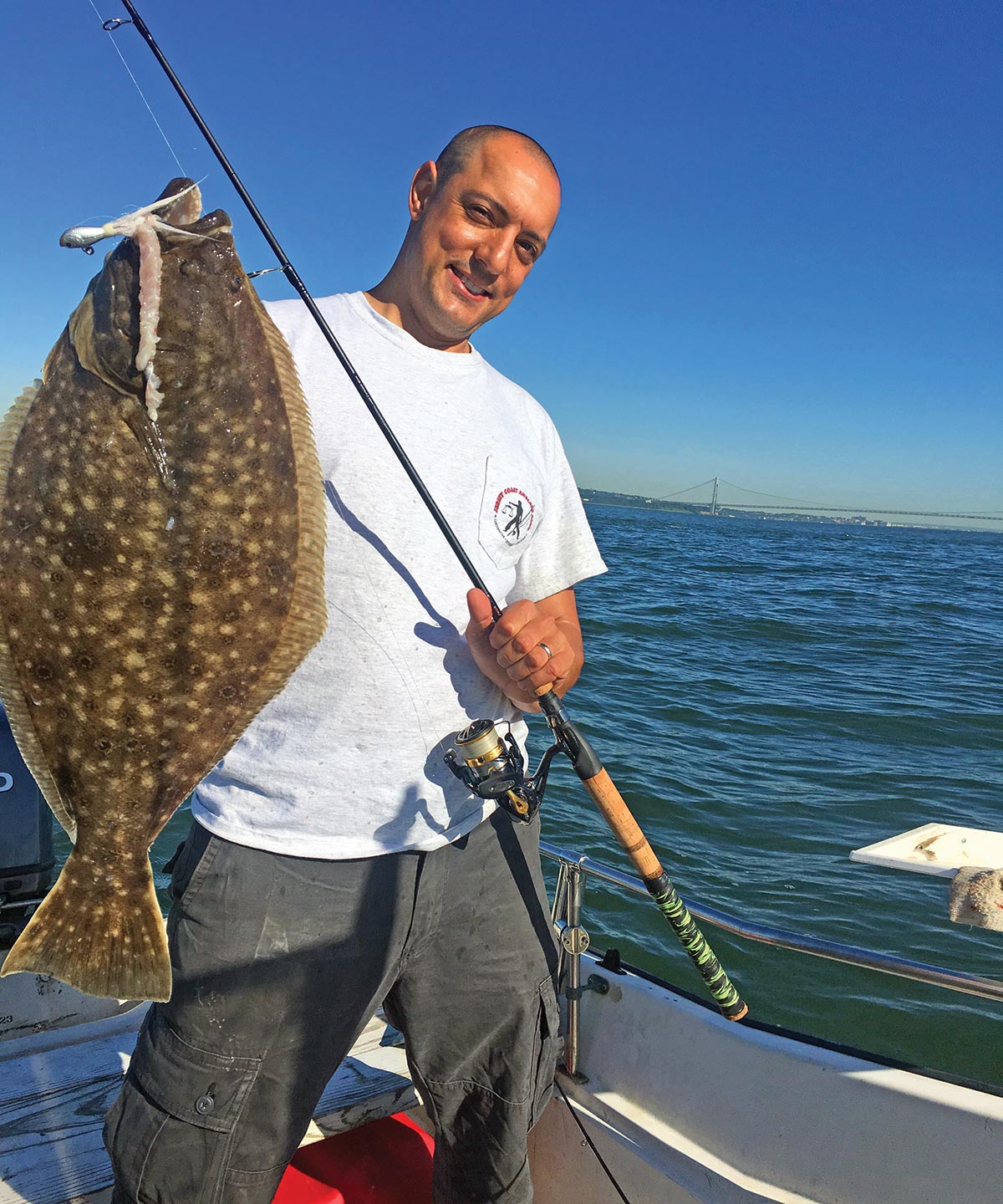
When the perennial hotspots don’t produce, expand your territory & approach.
Fluke fishing in the New York Bight just ain’t what it used to be. The game has changed dramatically over the past 15 years and summer flounder fanatics, including myself, must adapt or go home skunked. The days of having the edges of Ambrose Channel paved with flatties following the first full moon in July have become less and less consistent with each passing year.
Two years ago, during a popular fluke tournament in early August, I revisited a stretch of Ambrose that had historically produced very well during that time of the year, and found it barren. Not just to lack of keepers, but lack of life to the point of embarrassment that we would waste precious tournament time in such a dead zone!
Again last year, long stretches of Ambrose Channel and many areas in the New York Bight failed to produce large numbers of fluke of any size. Thus raising the million dollar question, where have all the fluke gone?
From 2005 to 2015, I averaged 60 fluke trips in and around Ambrose Channel. What I’ve found is that the early season, end of May through the first week in July, is the only part of the fluke season that has remained fairly consistent over those years.
Telltale Signs
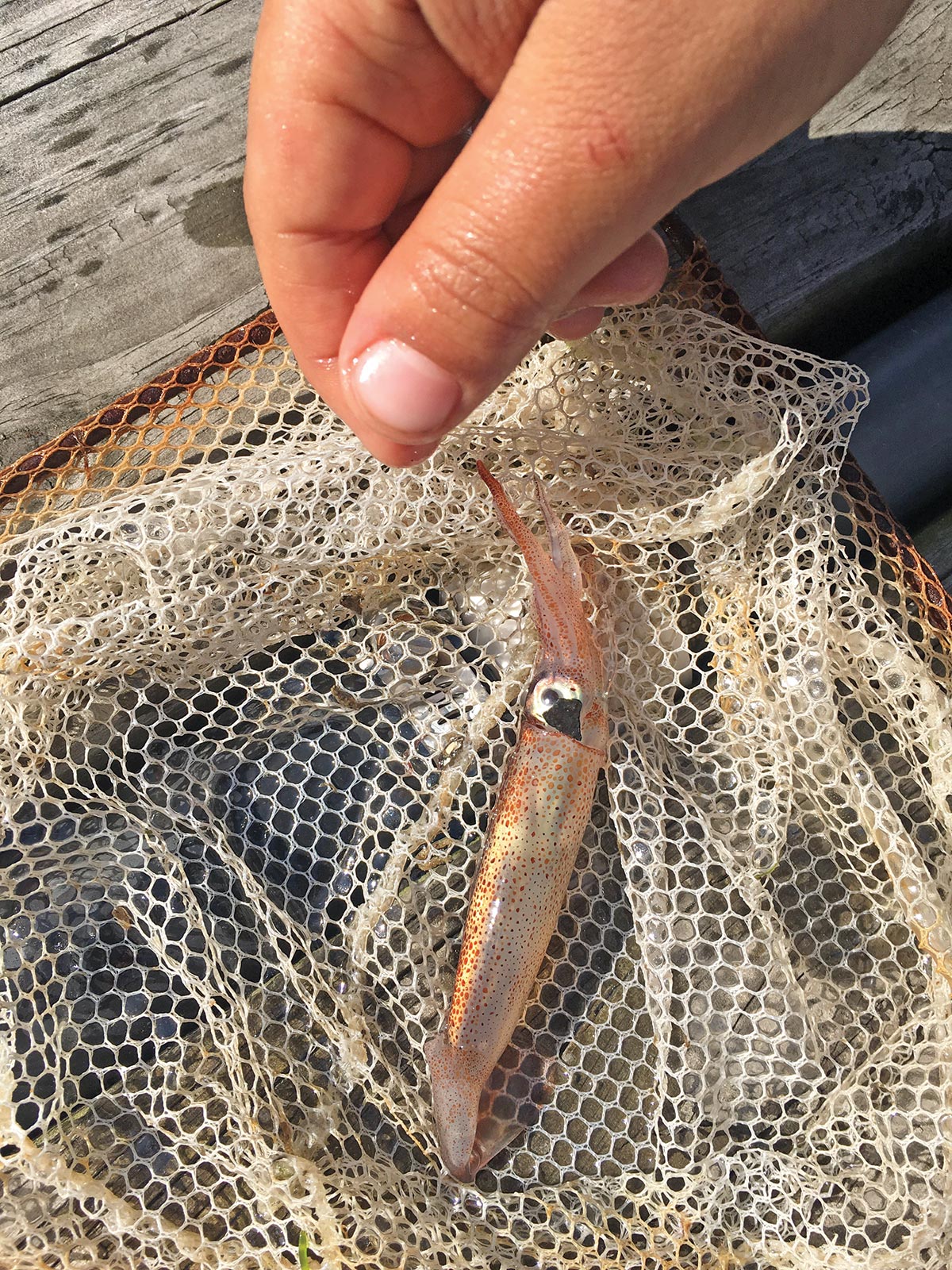
Each year as water temperatures breach the 60-degree mark, small baitfish consisting primarily of rainfish and sand eels, with squid in the mix, pushed way into Jamaica Bay, Raritan Bay, and Lower New York Bay, and fluke have been hot on their tails. This same pattern held true last year for the first half of our 2018 fluke season. All you had to do to find fluke, and last June it was look at your fishfinder until you marked a shoal of bait. There was no mistaking when you came across these piles of bait as your sonar would often read dense schools several feet thick.
If you were out searching for fluke off your kayak or small car topper without the luxury of a fishfinder, you could find these schools of bait by looking into the water for those telltale flashes reflecting off the silvery sides of sand eel and rainfish. Another reliable method for finding baitfish early last season was to look for diving birds. Unlike later in the 2018 season, when bluefish became almost non-existent, the early season saw a good amount of 2- to 4-pound bluefish tearing up schools of bait all over the New York Bight and into all the local bays and estuaries. Bird action signified bluefish on the surface, but created an irresistible natural chum slick underneath the bluefish melee featuring severed sand eels and chopped up rainfish. Feasting on the fragmented pieces of fish that settled to the bottom were mixed-sized fluke and sometimes a schoolie bass or two.
When gearing up for early season fluke, I initially rigged up with my tried and true double bucktail rig consisting of a small 3/8-ounce bucktail on top and a heavier bucktail, 1 to 4 ounces, on the bottom. Both tipped with Berkley Gulp! 4- or 5-inch swimming mullet in chartreuse or pearl white on top and a 6-inch grub in pink shine or white glow on the bottom. This rig worked well but the top jig bouncing a few feet off the bottom proved too tantalizing for bluefish to resist. I had to switch over to a single bucktail presentation and keep my offering “low and slow” when targeting fluke. Sure, I would still intercept an occasional bluefish, but far less than when using two bucktails bouncing in tandem.
As an added bonus though, the first bluefish landed was stripped up into long, slender, sand eel-sized strips of 6 inches or so, and immediately tipped on the bucktail in conjunction with, and sometimes even in lieu of, the more fragile Gulp. Baby hops off the bottom with a few higher sweeps mixed in closely replicated a sand eel slithering in the sand, trying to flee from prey.
A 6-foot, MH Shakespeare Ugly Stik Elite Spinning rod paired with 2500 size reel, loaded with 14-pound test Berkley Fireline Ultra 8 and finished off with a 3-foot section of 20-pound test fluorocarbon rounds out the arsenal. These combos offer extreme versatility, and are well-suited for vertical jigging or fan casting a promising area. Over the years, I’ve experimented with other types of “limper” eight-carrier braids in 15- and 20-pound test, and I have been largely disappointed by more frequent tip wraps and wind knots when compared to the stiffer Fireline, which I find advantageous, especially on spinning tackle.
Adapt & Improvise
This action stayed solid through the first week in July last year, but as the water temperatures in the bays and backwaters warmed, the sand eels receded back out to the depths, and quite abruptly, that early season bite was over. The bluefish all but disappeared, the clouds of bait were gone, bird life dissipated, and similar to previous seasons, the fluke did not settle on the edges of Ambrose in the numbers previously experienced. So again, where were all the fluke? Did every fluke in the New York Bight follow the sand eels out into the ocean?
Part of the answer came a few days later. The inshore fluke action had become so spotty over the sandy humps and channel edges that I didn’t want to subject my 8-year-old son to a day of fishless boredom. I opted instead to bounce jigs over inshore rock piles. While the fluke fishing left much to be desired, the porgy action had been fast and furious. Between, porgies, small sea bass, sea robins and hopefully fluke, there would surely be something over this hard bottom to bend a rod. Two rods were rigged and ready, each with a 1-ounce white bucktail tipped with a 5-inch pearl white swimming mullet.
As I idled up to the first drop I kept the outboard running while I saw the rocks pop up on my fish finder and hovered over the structure while we dropped the jigs down to the bottom. It was almost dead high and current had slowed down to a trickle, yet the structure we were fishing was small and we would only have a few seconds in the prime strike zone unless I jostled the throttle in and out of gear. While trying to keep us over the rock pile, my rod doubled over followed a second later by my son’s. I threw the boat in neutral and we started to drift away from the rock pile. Line peeled off my reel. My jig had firmly wedged itself between the rocks. My son’s rod, by contrast, was throbbing by the telltale headshakes of a sizable fluke. Slowly he fought the fish to the surface and I slid the net under a very respectable 28-inch fluke, our largest of the season to that point.
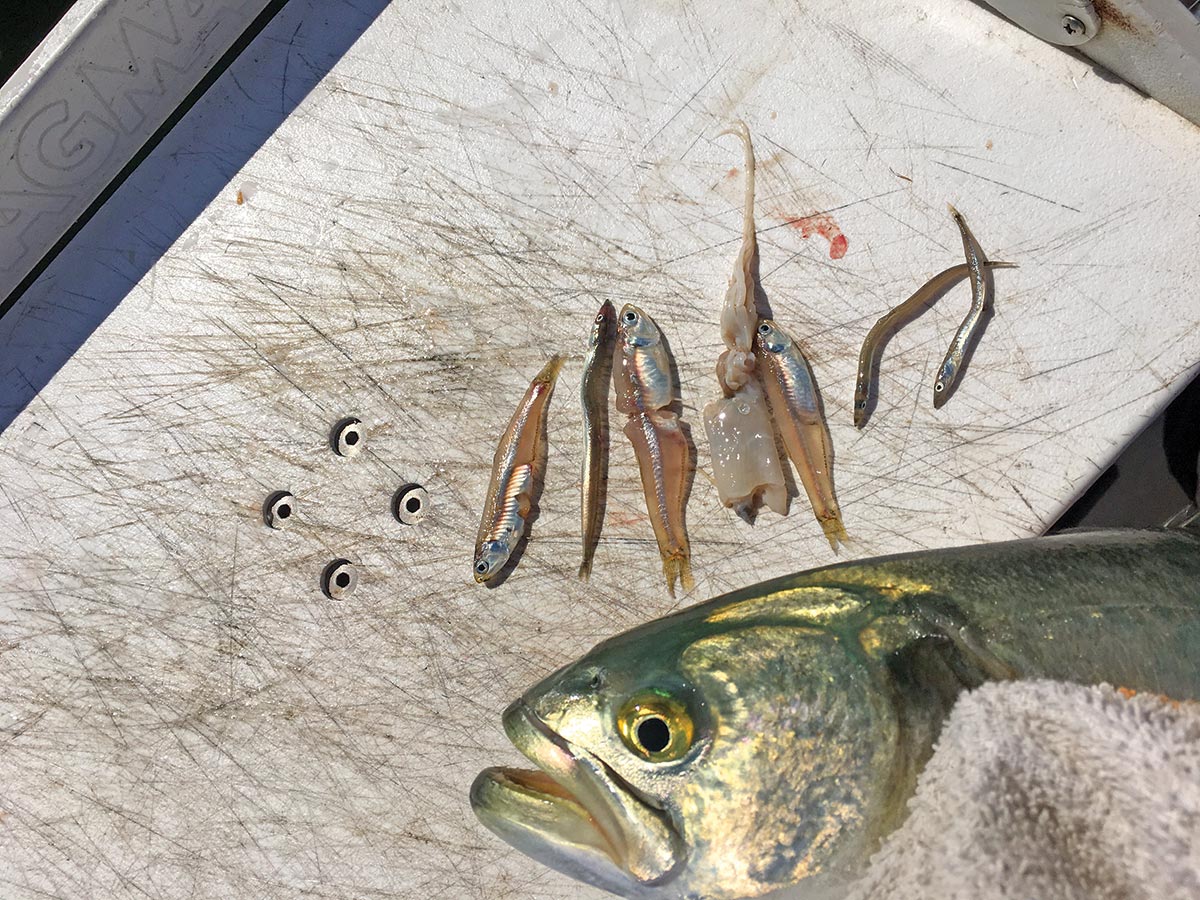
After throwing that first fish on ice and re-rigging my rod with a 6-inch pink shine Gulp/bucktail combo, we hovered over the rock pile again and began bouncing over top, just into the sand on the backside when I connected with a 24-inch fluke myself. Over the course of the next couple of hours that day, we hit several other rock piles, and underwater obstructions, adding a 21-inch seas bass and several other keeper fluke to our cooler, while also fighting through dogfish, sea robins, and porgies.
It has become second nature to me to examine the stomach contents of all the fish I keep. As expected, the fluke we brought home no longer had their stomachs stuffed with sand eels and rainfish but instead had noticeable protrusions which turned out to be crabs, bergals, and porgies. Following that trip I did still peak into Ambrose Channel in the later parts of July and August, just to see if the action had improved at all—it had not. It was not good at all!
So, as a fluking default last season, I planned my fluke trips around the slowest part of the high tide and hovered over hard structure from Sandy Hook to Breezy Point up north of the Verrazano Bridge and every piece of obstruction in between.
NY State of Mind
I have since gained a newfound appreciation for the side imaging feature on my Humminbird Helix fish finder/GPS unit. Side Imaging allows me to look 200 feet to the left and 200 feet to the right of my boat searching for unmarked structure in the form of tiny wrecks, mussel-covered rock piles, and debris fields. Some pieces had more fluke around them than others but just about every piece of hard bottom was covered with porgies; and these are what the residual fluke, the ones that did not get sucked out to sea by the sand eel vacuum, were feasting on.
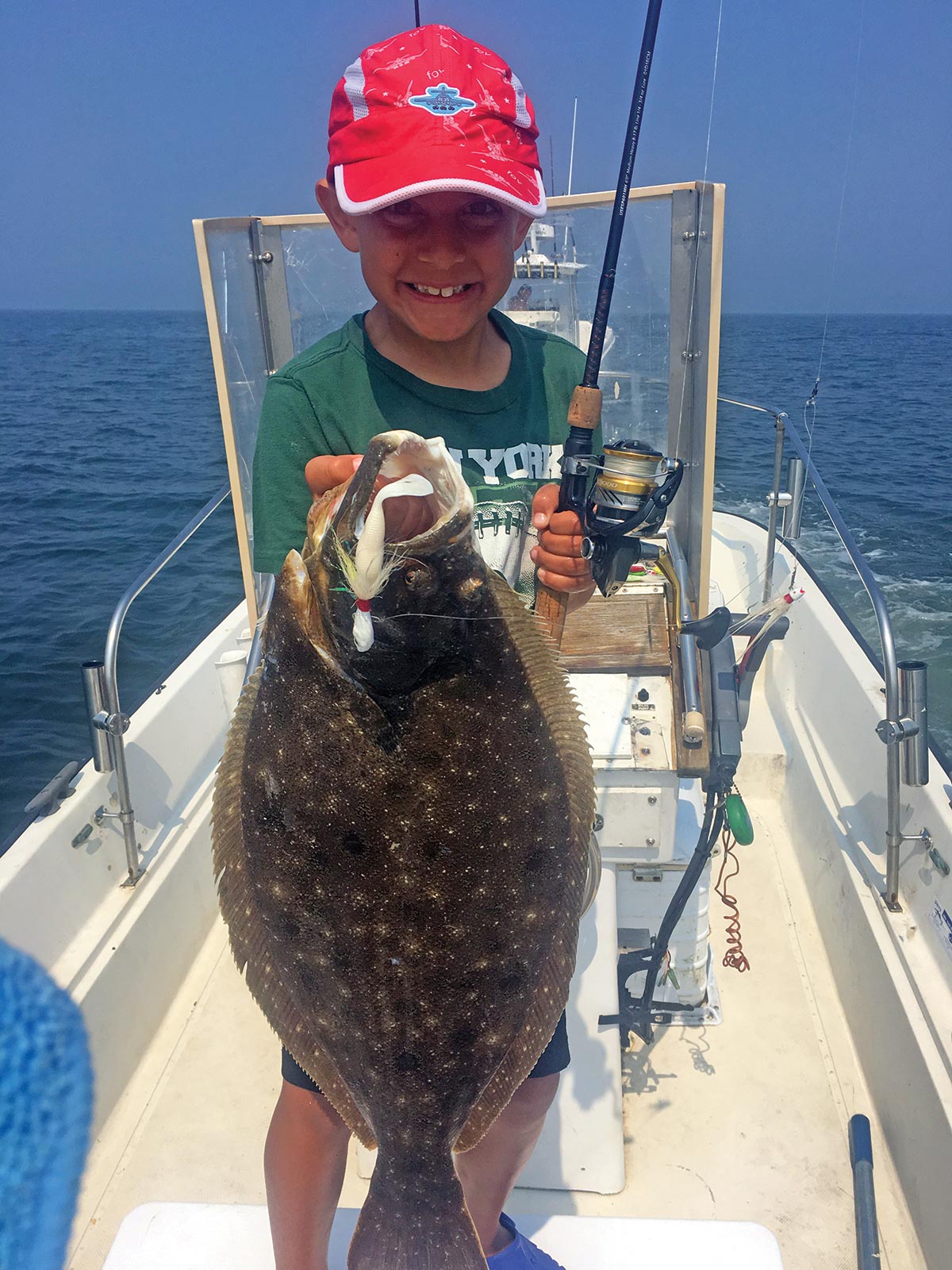
I cross referenced my porgy theory with Jimmy Giordano over at Bernie’s Bait and Tackle in Sheepshead Bay who echoed that without a doubt, many of the bigger fluke his customers weighed in the Brooklyn-based shop from the middle to the end of last fluke season came out of areas with hard structure. “Fluke were caught over hard bottom at the northern end of Ambrose, but also from structure on the other end of Ambrose, on the ocean side,” Giordano said, adding “Areas around Scotland also produced well.”
In addition to porgies drawing fluke to these rock piles and wrecks, he also said squid were a prime target for holding doormats recommending the 6-inch Gulp! grubs, especially pink shine color, which he said worked really well for fluke last year. “You had to work jigs over the sticky bottom and although you were going to get stuck and lose a few rigs, that’s where the big fluke were,” Giordano added.
Mike Bulzomi, owner and operator at Sea Travelers Marina inside Mill Basin in Brooklyn told me that two of his customers, the Parker Brothers, who are well-regarded as being savvy in the ways of the flattie, never really had to leave Jamaica Bay last year to catch big fluke. Instead, they pounded away at inshore structure and fished primarily natural baits instead of artificials. “The bay was loaded with porgies but also saw squid enter the bay at times,” cited Bulzomi. The porgies wreaked havoc on sensitive Gulp baits leaving many anglers with a Swiss cheese presentation. Old school spearing and squid combos or strips of sea robins held up much better to the bait stealers and accounted for many of the larger fluke.
I am just about as big a believer in the fluke-catching prowess of Gulp as there is. Yet, with the amount of porgies, juvenile sea bass, bergals, snapper blues, and other bait stealers as there were covering the structure last season, I also had to do some experimenting. One alternative was to strip out small bluefish, sea robin, and even dogfish that I caught on the fishing grounds at tip the jigs with those strips. The other product I tried were 5-1/2-inch eel tail jig strips by Fat Cow Fishing. These slender slayers have all the action of a grub tail but are super durable. Often times, after getting my Gulp tail bitten off, I would leave the nub on the shank for scent and add the Fat Cow to the hook for action. This combo proved effective and durable.
While history does tend to repeat itself in the world of fishing and fish migration pattern, change over time is inevitable. That’s a very difficult pill to swallow as change is hard for all of us. When considering an area to target fluke this summer, keep an open mind and an eye on your fishfinder rather than simply relying on your logbook of numbers.
As it is in nature, those who do not adapt will die.

